The public discourse/conversation on screen time:
- The argument against screen time becoming a ‘moral panic’
- Screen time linked to how children behave
- Research on neural mechanisms involved in the effects of screen time, and potential for online activities to become ‘addictive’
In engaging in an internet search: “Screen time and children”, I found mostly negative associations, and a lot of what the first article I linked would consider as moral panic. I think it is important to consider, when combing through news and online articles, to consider sensationalism of the news cycle and temper what information is online with a healthy dose of skepticism. Digital literacy and critial thinking skills are definitely needed when exploring controversial topics!
Some Considerations
- Growing research that illustrates a trend of overall increase in screen time exposure with children ages 8-18, with adoloescents aged 11-14 spending as much as 9 hours a day online
- Associations between screen time and psychological outcomes cannot completely determine a direct causal link, as psychological well being is complex and difficult to measure across a lifespan, although the cited study states the causal link between psychological well-being and screen time as a likely possibility.
- The study found in this post was limited to high-income earning countries
- A large variable to consider is the influence of family relationships and social economic status.
Benefits of Screen Time
- Can assist in maintaining and staying connected with existing relationships
- Helps children explore safe identity exploration
- Aid in academic pursuits
- Help assist students in learning tasks
- Provide educational, supplemental learning through educational programming
- TV watching amongst early adolescents produced no measureable association with poor, mental health outcomes
Negative Impacts of Screen Time
- Excessive screen time can displace important protective behaviours for mental health such as physical activity, adequate sleep, and in person social interactions, which can be detrimental to psychological well-being
- Studies have associated screen time with unfavourable measures of poor mental health, such as: Depression/depressive symptoms, conduct problems, emotional problems, negative affect, sleeplessness, and experiencing short temper. These studies have measured the results from longitudinal studies where baseline psychological profiles were taken into account
- Negative cognitive function was associated with screen time as well. These include: poorer attention span, executive functioning, language memory, visuospatial processing, and reduced happiness in other studies.
- Total screen time use was associated with indicators of poor mental health, such as higher anxiety symptoms and depressive affect in girls, among other issues
- Screen time use in older adolescents associated with higher levels of depression and depressive symptoms
- Weekend smartphone use was associated with poorer mental well-being across all usage levels
Prompt: What is the relationship of your topic to teaching and learning?
- As part of our redesigned curriculum, teachers are encouraged in numerous ways to prepare students for 21st century learning. Here is an excerpt from the BC curriculum website on the redesigned curriculum:
“Today we live in a state of constant change. It is a technology-rich world, where communication is instant and information is immediately accessible. The way we interact with each other personally, socially, and at work has changed forever. Knowledge is growing at exponential rates in many domains, creating new information and possibilities. This is the world our students are entering.”
- Offering flexible learning environments is also a component of 21st century learning as it integrates technologies that support learning in creative and accessible ways. The technologies explored in this blog post support BC’s redesigned curriculum as it prepares students for 21st century learning and encourages deeper learning and engagement with materials that are connected to the real world.
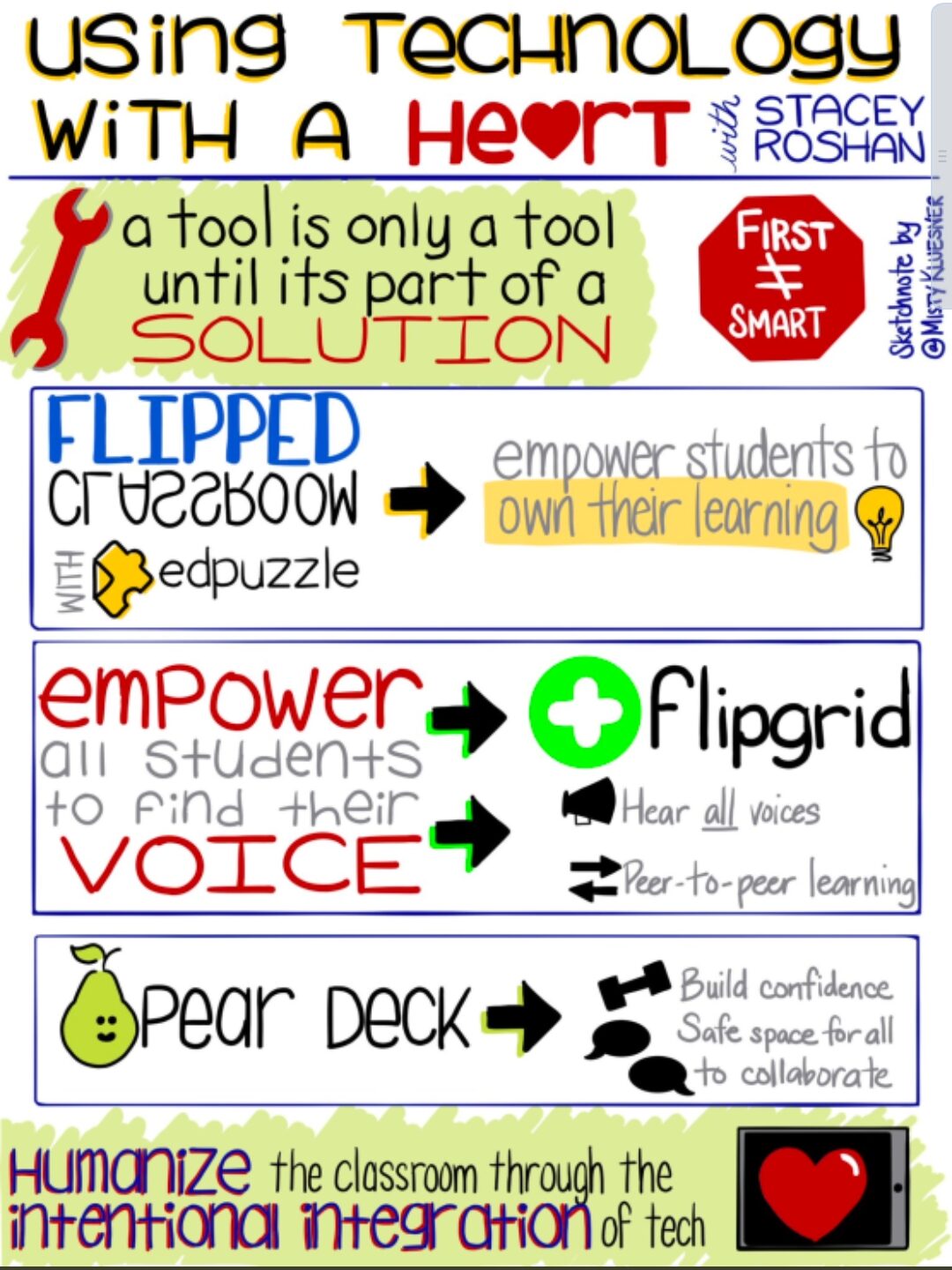
How do we implement techonologies in classrooms in safe ways?
There are vastly rich examples of educational technologies, apps, and programs that help facilitate, and even improve learning outcomes. In order to balance the negative associations of excessive screen time on developing brains, educational institutions and public schools could introduce technology in a balanced way, that does not decrease the amount of time spent engaging in protective behaviours. It is important to consider students that need more accesible ways to learn with the use of tools such as:
- Text to speech programs
- Assistive Technologies for students with Autism Spectrum Disorder
- Speech articulation apps for students with speech delays
As well, the tools, applications, and websites we have been exposed to in this course are incredible resources to help engage a diverse range of learners and help lessons ‘come alive’, so to speak. Some of my personal favourites have been:
- Tinkercad | Create 3D digital designs with online CAD | Tinkercad
- Making inforgraphics on Canva
- Creating vidoes with ScreenCasting

Screen Time in the Classroom Tips to Use for Teachers
These days, it feels like there is a screen no matter where you go! With digital outlets being used extensively in today’s world, such as TVs, computers and tablets, it is important to monitor how much screen time is used within the classroom. Here are some strategies to consider when deciding how to manage screen time in your classroom.
Although the majority of students in the early primary level might not own smartphones, it is still important to teach the consequences of too much screen time early on. Here are a few lesson plans for K-2 students to learn about screen time and how and why to limit it.
https://classroom.kidshealth.org/classroom/prekto2/personal/fitness/screen_time.pdf
For the intermediate levels and up, ask students to calculate their screen time. Although the research varies, experts suggest that students should spend no more than about 2 hours per day on screens. Asking students to calculate how much time they spend on screens both at school and at home teaches students to become self-aware of how much time they spend on screens. This might help the teacher decide how much screen time they wish to implement in their lessons if they know their class is spending a lot of time on screens at home.
For junior high students, students might already start to own cell phones. Some strategies for managing cell phone use in the classroom are:
- Have charging stations where students can place their phone to be charged while on silent. The cell phone is to remain at the charging station throughout the period
- Have a class discussion about the pros and cons of cell phones and critically discuss as a group if cell phones are conducive to learning. Do some research and bring in both sides of the argument to show to students. Create a few, but not too many, rules together as a group surrounding cell phone use.
- Have designated cell phone brakes for students to use their phones. 2 minutes of screen time, then 20 minutes of learning time, for example.
- Do not engage in a power struggle with the student. It is never helpful to anyone, teacher or student, to play tug of war with a student and their phone. It is always a good idea to give students choices in deciding how they wish to deal with their phone, if it becomes a distraction to learning. Teachers can mention, “You have two choices, you can put away your phone for the rest of the period, or you can hand it over to me for the rest of the period.” This gives the student autonomy over their own actions. If the student continues to struggle with their phone use, give the students 3 seconds to hand their phone over to you and then remind them that they’ve made their choice.
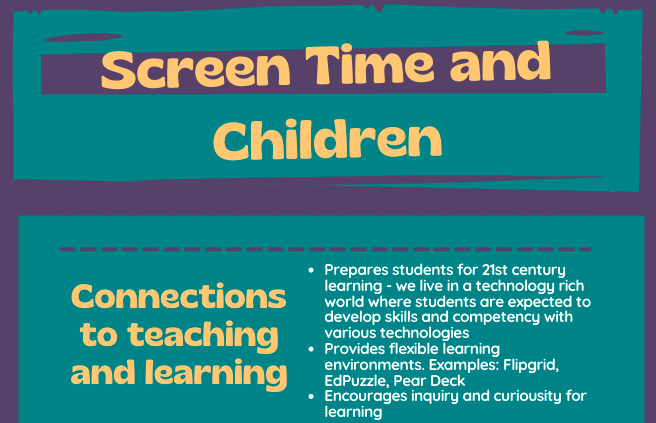
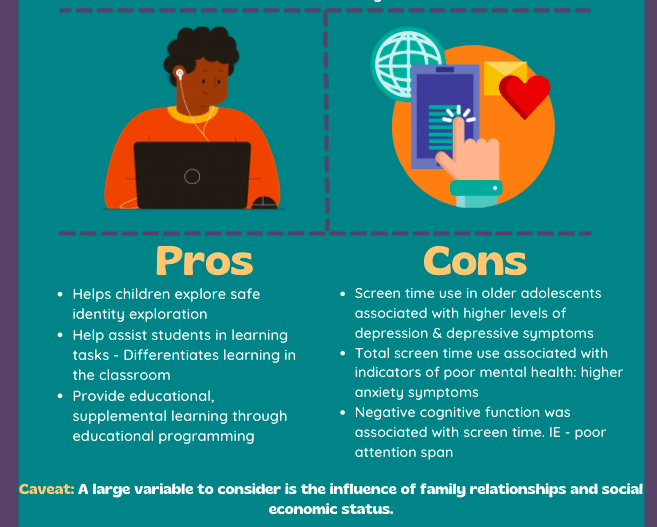
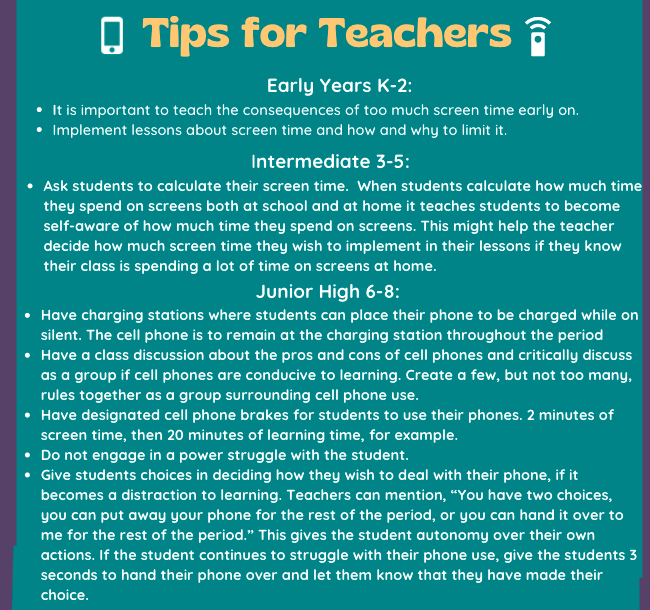
Concluding Thoughts:
We feel we have a more balanced outlook on the topic of screen time and its effects on children both outside and within classrooms. Meanwhile we agree with the studies and can see the negative associations between screen time on developing brains, and we are reminded to view this through a nuanced lens and consider the vast array of factors that contribute to psychological well-being. Screen time can be a factor, but it must be considered with other factors as well.
“I think this inquiry project has allowed me to develop a more critical look at the topic, and has helped inform my choices to implement technology as a future teacher. Through this inquiry, I also made numerous connections with BC’s redesigned curriculum goals and feel more competent in incorporating supportive, educational technologies into the classroom to support 21st century learning. I also believe implementing technology into the classroom can help turn classrooms into high-level inquiry environments where students have the opportunity to become more engaged and involved in their learning. Within this context, I am reminded of the High Tech High’s amazing cross subject physics and humanities class where students are encouraged to create a physical representation of their complex social theory about why civilizations rise and fall. This project allows students to use technologies such as laser cutters and programs on computers to create physical structures, and empowers students to make decisions and become responsible for their learning and assessment.” -Sandy Mac.
“The decision to allow cell phones or not, or to use digital methods extensively or not, is still a topic of debate in today’s educational world. Experts agree that too much screen time is not healthy for children for physical, social and emotional reasons. Taking this into consideration, it is up to the educator to decide what works best for them in their teaching practice and what works best for their students.” – Ami Multerer.
Resources:
https://www.youtube.com/watch?v=4i0nAZypnV0
https://www.teacherlists.com/blog/tips-for-reducing-your-students-screen-time/
https://www.commonsense.org/education/articles/screen-time-in-school-finding-the-right-balance-for-your-classroomhttps://www.brainbalancecenters.com/blog/tips-managing-much-screen-time-school
Works Cited
Oswald, T. K., Rumbold, A. R., Kedzior, S. G. E., & Moore, V. M. (2020). Psychological impacts of “screen time” and “green time” for children and adolescents: A systematic scoping review. PLoS ONE, 15(9). https://doi.org/10.1371/journal.pone.0237725
Curriculum Redesign | Building Student Success – B.C. Curriculum (gov.bc.ca)
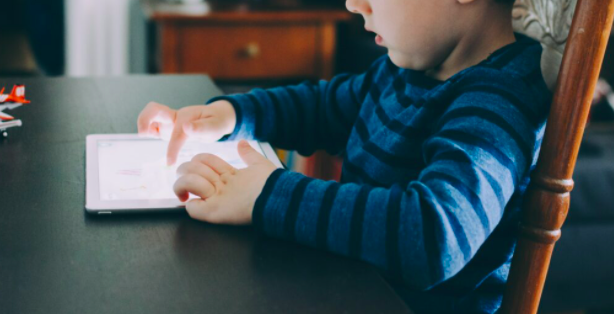
Leave a Reply